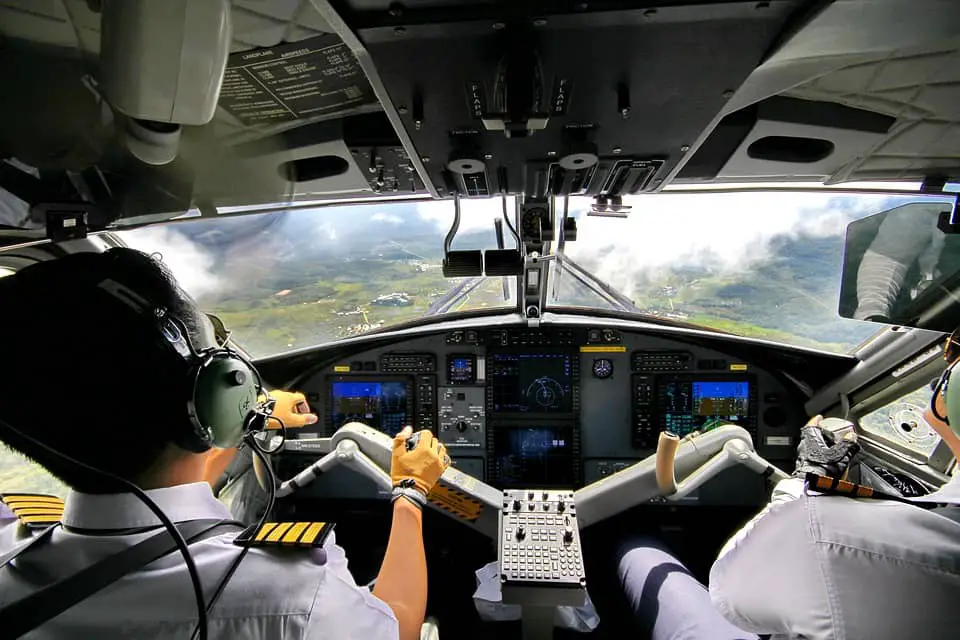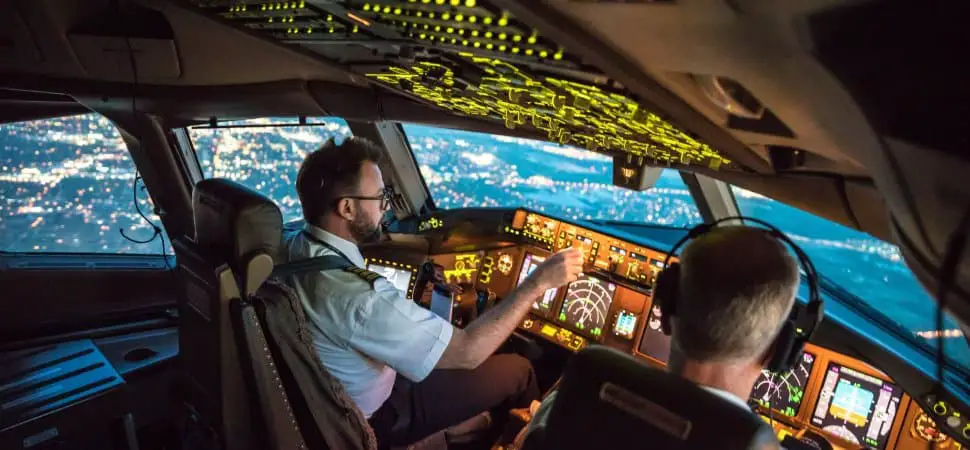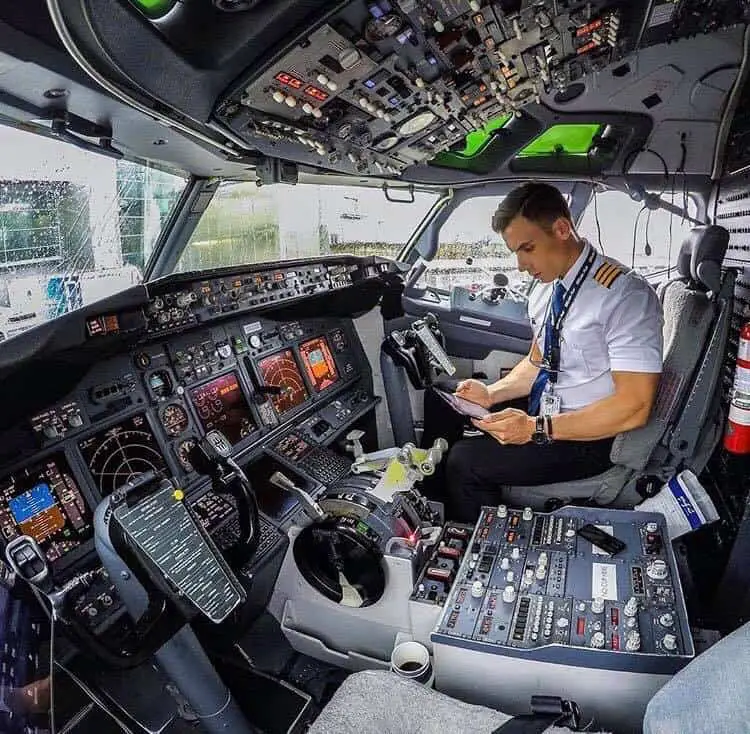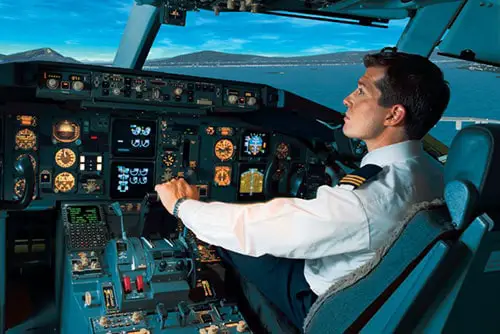Table of Contents
*This post may contain affiliate links. As an Amazon Associate we earn from qualifying purchases.
Whether planning a short-trip or anticipating flying across the country, it is essential for a pilot to use a flight planner to account for weather, air traffic, and more. Being prepared is integral to pilot an aircraft safely, and a flight planner helps pilots chart their course well before takeoff.
Flight Planner For Pilots

Although the friendly skies above are not as congested as the roadways and highways on the ground, it is still necessary for a pilot to utilize a flight planner before taking to the air.
Upon configuring the route an aircraft will take from its departure location to arrival, a pilot can better estimate how much fuel is needed, and to plan for emergencies. In addition to surveying a flight planner to check for air traffic and weather patterns, it prepares a pilot for better connection to air traffic control.
Collisions in the air are thankfully a rarity, all because of the due diligence of pilots in the cockpit, adhering to air traffic safety regulations, and being prepared.
Using a flight planner automatically creates a safety check for pilots, as it covers the following facets.
When flying in controlled airspace, a flight planner highlights airways that are predetermined for use
A planner helps cut down on excess costs because fuel, speed, and altitude are calculated
To ensure an aircraft can reach its destination safely, a planner provides vital information
Why Flight Plans Are Necessary

A pilot needs to assess everything that is critical to safely fly an aircraft from departure to landing at the planned destination. Using a planner, a pilot can better understand how long it will take for the plane to travel the chosen route.
Additionally, enough fuel should be loaded into the aircraft to ensure that a plane can safely reach the arrival destination, fly to an alternate location in case of undesirable weather or an emergency, and be able to stay in the air an additional 45 minutes.
Planning before a flight requires using agreed upon terms of conduct, terminology, and communication.
When an airplane is in the air, pilots agree to communicate with air traffic control and fly their aircraft at varying altitudes to prevent the chance of a mid-air collision. If a fight takes place where there is a long stretch of desert or oceans, a pilot must plan for an alternate route or arrival destination in case of problems.
In the sky, the routes that an aircraft travels upon is called an airway. Similar to traveling on roadways, aircraft must be flown according to air traffic control’s careful monitoring.
When a pilot wishes to travel their chosen route, they may come across waypoints. Airways start and finish with a waypoint, and there are intermediate waypoints along routes as well. Waypoints are used for a pilot to connect to another airway, and to report to air traffic control.
Flight plans are helpful for assessing and making allowances for the following during a flight.
- Weather and wind conditions
- Amount of fuel needed in relation to aircraft weight and distance traveled
- Understanding navigating air traffic and airways safely
Commercial Flights Versus Private And Military

When a commercial flight takes place, there is concern about safety for passengers, crew, and protection of any luggage or packages on board. Cost is a huge concern for commercial flights, because fuel, flying time, maintenance, and other charges may be attached.
Pilots who fly commercial aircraft will travel from one airport to another, traversing along different waypoints.
Private and military aircraft often circle back and arrive at the same airport at which they departed.
Optimizing Flying Aircraft Via Planning

To mentally and physically prepare to take to the skies, pilots utilize standardized plans and tools to determine their route, expected weather conditions, and troubleshoot for any problems that may arise.
Flying an aircraft requires a thorough understanding of how various components work, utilizing proper terminology over the radio to communicate to air traffic control, and having strong attention to detail. Constantly monitoring the controls and working alongside the flight crew can help make a flight safer and enjoyable.
Flight plans help a pilot and crew assess the necessary cruising speed and altitude for a flight. Depending on the length of a flight, the amount of fuel needed to compensate for the weight of passengers and cargo vary. Pilots must also be prepared to calculate how much the altitude and cruising speed will affect the cost of a flight.
When working for a commercial airline, cost and trimming excess cost for fuel, time, and maintenance is essential to continue operations.
A pilot cannot simply get into a plane and takeoff without making calculated assessments for all needs of a flight. If a flight must take a detour, execute an emergency landing, or is behind schedule, planning is integral to the process.
Once a pilot determines the departure and arrival locations, it is invaluable to use a flight planner to choose the best route to save on time, utilize the wind, and arrive safely.
Pilots will have to get permission to fly along certain routes, and if they are not permitted access to specific airways, adjustments to a course will have to be taken.
The weight of an aircraft will determine the altitude at which a pilot can fly. Lightweight aircraft can fly a lot higher than heavier aircraft, which saves money on fuel costs. However, a pilot will make use of a tailwind that is stronger at lower altitudes, to help speed things along.
A lower speed will lower the amount of fuel that an aircraft needs to consume to stay aloft, but it may interfere with the projected time that a flight is to arrive at its destination. Fuel costs are also adjusted if a plane is carrying cargo that requires air conditioning.
Planning a flight using available resources helps a pilot figure out which is the best path to take when in the air, utilizing calculated fuel costs, projected time frame, and favorable wind conditions.
Technology And Common Planning Tools For Pilots

Thanks to advancements in technology, there is a myriad of different tools and resources that a pilot can use to configure their flight path, time constraints better, and optimize cost and efficiency for fuel.
Pilots can not only take advantage of actively updated charts that show weather patterns, airway traffic, and landing destinations along a route. Today’s pilot has various apps at their fingertips for information.
ForeFlight Mobile
This app is useful for pilots with an iPad. The flight crew can take a look at maps, weather, check weight and balance of their craft relative to current conditions, and other necessary information for flight planning. This app readily replaces old-school maps and GPS positioning.
My Radar
Being prepared for a shift in winds and weather is critical when flying an aircraft. This app is useful for pre-planning of a flight, as it shows route overlays, NEXRAD radar, and allows you to zoom in for a closer look. Plus, this app is user-friendly and free to use.
WingX
This app allows pilots to take a look at moving maps, survey terrain, utilize flight data recording, and factor in altitude.
These are not the only apps available for anyone wishing to take flight, and new apps continue to be developed to help better train student pilots and assist professionals with commercial or private flights.
Be Prepared Before Taking To The Air
Flying a plane is a lot of fun, but it also entails a lot of responsibility too. Committing to actively using tools and planners for aircraft voyages are essential for success.
The FAA has made various safety standards and regulations for pilots to adhere to for more secure flight. If a pilot neglects to properly go through safety checks, maintain their aircraft, and fails to use planners to assess conditions, it may contribute to unnecessary problems en route.
Before takeoff, pilots value assessing the conditions of their flight, planning their set route, and anticipating any adjustments that may be necessary. Flying is not an inexpensive hobby or activity and requires careful planning to calculate safe passage via airways, configuring for weather patterns, and the weight of an aircraft and cargo.
Whether taking a short flight under an hour or venturing over oceans and long stretches of terrain without airports for hours, it is critical that flight planning takes place.
Student pilots quickly learn the value of using a planner to chart their path in the skies, adjust for changes in wind, weather, and heavy air traffic.
Agreeing to learn and utilizing standard methods of operation, terminology, and effectively communicating any needed changes or actions when in the air reduce incidents with flying.
Pilots should ensure that they utilize current technology that currently reflects radar reports, allows for tracking, and is readable and easy to use. Many applications have live updates or routinely upgrade their information every couple of weeks, depending on what is displayed.
Mobile apps have created the opportunity for pilots to readily learn about adverse conditions for a fight, navigate their chosen course safely, select an optimal flight plan that best conserves on fuel and time, and allows for varying calculations.
No longer do pilots have to rely on multiple old-school maps and charts, thanks to technological advancements that offer a comprehensive and trusted source to access a wider range of valuable information.
Flying is a privilege that demands careful planning and forethought before taking off from the tarmac, and into the wild blue. Using planners are a must-have resource for any pilot worth their salt.

